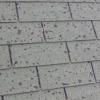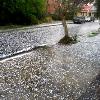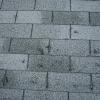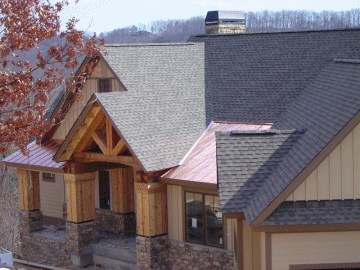
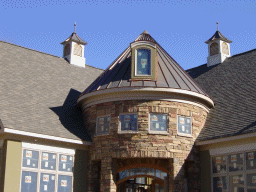
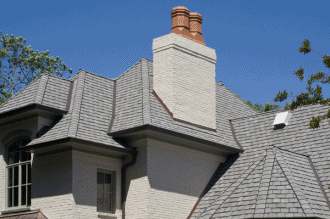
What Should I Do If I Think I Have Hail Damage?
The first thing to do if you think your roof may be damaged is to look at your car parked outside, your mailbox, window screens, vinyl siding, air conditioner, etc. These items are much more prone to hail damage than your roof. If you have damage to these items, it may be prudent to call your insurance company or agent and advise them of the damaged items and your roof concerns. Get your policy out and review your coverage, your exclusions and what may be required of you as the policyholder. In most cases, you will be required to pay your deductible to your contractor of choice at the beginning of the project. But let's not get ahead of ourselves.
Your insurance company will assign an adjuster to visit your home and inspect the damages. The inspection of your roof will include checking metal structures, such as roof vents, ridge vent, exhaust turbines, etc. These soft metal structures will reveal the severity of the hail downpour. A subsequent inspection of the actual shingles will then take place. There are numerous types of damage (unrelated to hail) that may be found, including, but not limited to, shingle hardening, cupping, cracking, blisters, etc. A description of such damages can be found at the website listed earlier.
I spoke to a local roofing contractor in our area who we have used extensively over the past few years. Together, we have categorized hail damage into three main categories:
1. Hail Splatter - this is described as visible evidence of hail impacting the roof which may leave a slight discoloration but results in no damage to the shingles. No action would be required for this type of hail event.
2. Slight Pitting - this is described as hail impacts with enough force to leave small indentions in the shingles and which result in minor granular loss. Typically, no action would be required for this type of hail event. However, if the damage affects a significant portion of the roof, replacement would be at the discretion of the insurance adjuster.
3. Shingle Damage - this is described as a hail impact with enough force to result in "shingle bruising" significant enough that the granules are dislodged, exposing the asphalt & fiberglass underneath. The inner body of the shingle is damaged/cracked and will require shingle replacement.
Generally, with either Type 2 or Type 3 damage, the insurance company will require that a test square be drawn in the areas directly damaged. The test square measures 10 feet by 10 feet. Within the test square, shingle impacts are circled with chalk. Afterward, pictures are taken to demonstrate the scope of the damage. Significant widespread damage may result in total roof replacement. Otherwise, the insurance company may approve roof repairs to the damaged areas.
I cannot overemphasize the importance of contacting a local, established roofer or general contractor to review your loss and negotiate the scope of repairs with your insurance company. Such a company would likely be available if warranty issues arise at a later date. Champion Construction has been called upon many times to repair shoddy workmanship when the "storm chasing" repair contractor has moved on to the next storm damaged area. In the long run, the lowest price can cost you an arm and a leg.
Check with your insurance adjuster or local agent to see if they can recommend a reputable local contractor. If they do good work you can expect that they will be busy, and you may have to wait a short while before they can get to your repair work, especially when there is a widespread storm event. However, you will be able to rest easy knowing that they are a short phone call away if any issues arise.
Excerpt from Ezine Article by Jerry Quarles of Champion Constructions Systems, Atlanta
Should I Replace My Roof After a Hail?
Probably the most common question about roof damage we get from people is whether or not they need to replace their roof after a mild to moderate hail storm because they often don't see any damage on their roofs. When people ask this question, my answer is "I don't know. I haven't seen your roof," because unless I see the roof, I cannot advise either way. So what I've done is compile some information to help people make that determination themselves, and maybe help some insurance adjusters make that determination.
Are There Hail-Proof Roofs
No roofing material is fully hail proof. There are hail-RESISTANT roofs. These products have Class 1 through Class 4 hail-resistance ratings, 4 being the highest. The ratings are given by taking a steel ball and dropping it from a pre-determined height and measuring the damage the roof has sustained. The American Society of Testing and Materials (ASTM) performs the tests.
Many roofs carry this rating. For steep slope, these roofs include some metal roofs, some tile and some composition shingles. For flat roofs, these are some gravel-surfaced built-up, and some spray foam (with the right coating system), and just a few others.
Installing a Class IV hail resistant roof may qualify you for lower insurance premiums, depending on where you live. Call your agent for verification. Keep this in mind, too, not many agents and adjusters will know the specifics about hail resistant roofs. Consult Allcon for further information on obtaining these roofs.
Composition Shingles
It's often difficult to determine whether or not a shingle roof needs to be replaced after a hail storm because damage is not readily evident. There are a few ways that I would make this determination.
1. I would look in my gutter or at the ground around my house. If I see a large amount of granules then reroofing would be a consideration. Granules aren't just there for appearance purposes, they're there to protect the asphalt based roof product (the shingle). Asphalt and the sun don't mix. The sun will beat it up pretty badly. It doesn't take much of a hail storm to dislodge a bunch of granules, thereby exposing the asphalt and shortening the service life of your roof. However, I must warn that telling one’s insurance company that roof damage is present, but the damage isn’t visible could easily turn into an unpleasant confrontation between a person and their insurance company. So here's what I would do in this case...
2. If my roof went through a moderate hail storm but no damage was readily visible, I would note the date and time of the storm, then notify my insurance company that I didn't observe any damage on my roof, but that doesn’t mean it isn’t there. Then I would sit back and wait a few months. If enough granules were knocked loose, the sun will hit the exposed asphalt (even though I can't readily see it, it is there). The exposed asphalt will deteriorate and more granules will come loose. In a few months and after a few rains, the damage will be readily evident. But before I go running to my insurance company, I will need to have done my due diligence.
- I take a lot of photos of the roof just after the storm (and after it's dried if it's wet). I make sure the date is shown on the photo.
- I also take photos of piles of hail and of the size of the hail stones next to a quarter, ruler, or something to reference the size of the hail stones.
- I'll also document every rain storm afterward (date and amount of rain) and take pictures of granules that have come off the roof.
If my roof looks much worse after about 4 to 6 months, I take this information to my insurance agent and tell him I need a new roof.
3. Many times hail storms produce visible damage, but the damage is fairly sporadic and sparse on the roof. What I do in this case is quite simple. I take a 5 foot by 5 foot section of the roof, and mark it with something. I like blue, chalkline chalk, the kind available at any hardware store, because it washes off easily. I then take a photo of the section I use mo, and I use more chalk and mark each hail impact I find and take another photo. I do this in three areas. I then take the average number of hail impacts found, multiply that by 4, and I get the average amount of hail impacts per square that my roof has experienced.
Other Steep Sloped Roofs
Concrete Tile – These roofs are pretty resilient. They can go through some pretty hefty hail storms and survive. Some tile may need to be replaced but that’s to be expected. When it comes to tile roofs, the underlayment is of extreme importance and is considered by some to be as important as the tile itself, and if you protect the underlayment, then you protect the interior of the building.
Clay Tile – Clay tile is NOT hail proof. It doesn’t take much of a hail storm to destroy a clay tile roof, which is one reason you don’t see many clay tile roofs in Tornado Alley. However, for those of you with some bucks to spend on your roof and who don’t live in hail prone regions, clay tile is long lasting and can be very attractive.
Metal Roofing – Another resilient roof system for steep slope applications. A metal roof may look like the hood of your car after going through a hail storm, but in many cases, its waterproofing abilities won’t have been affected by the storm. Check with the particular manufacturer of the metal roof to determine whether or not it has a Hail Resistance Rating.
Synthetic Roofing – Too numerous to mention them all individually, some synthetic roofs have good hail ratings. Even if they aren’t rated (no rating could mean they may not have been tested), they still may be very hail resistant. Some manufacturers make roofing materials that resemble wood shakes, and some resembles slate and is made from recycled rubber tires. These roofs would be able to withstand a substantial hail storm.
Cedar Roofs (Wood Shingles & Shakes) – Cedar roofs are not hail resistant and you will not find a genuine cedar roof product with any type of hail resistance rating.
HAIL DAMAGE!
Free estimates ~ Fully insured
We can help you with your HAIL DAMAGE!
F
A
Q
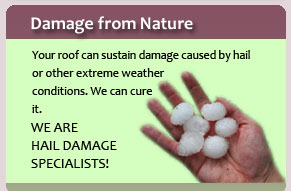
PESTRIVAS ROOFING
a division of pestrivas construction

